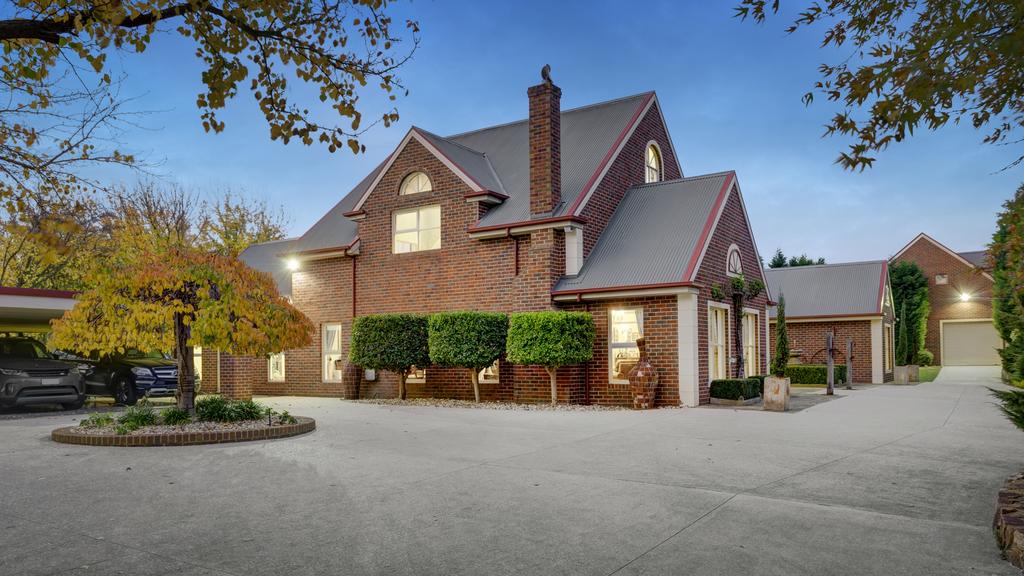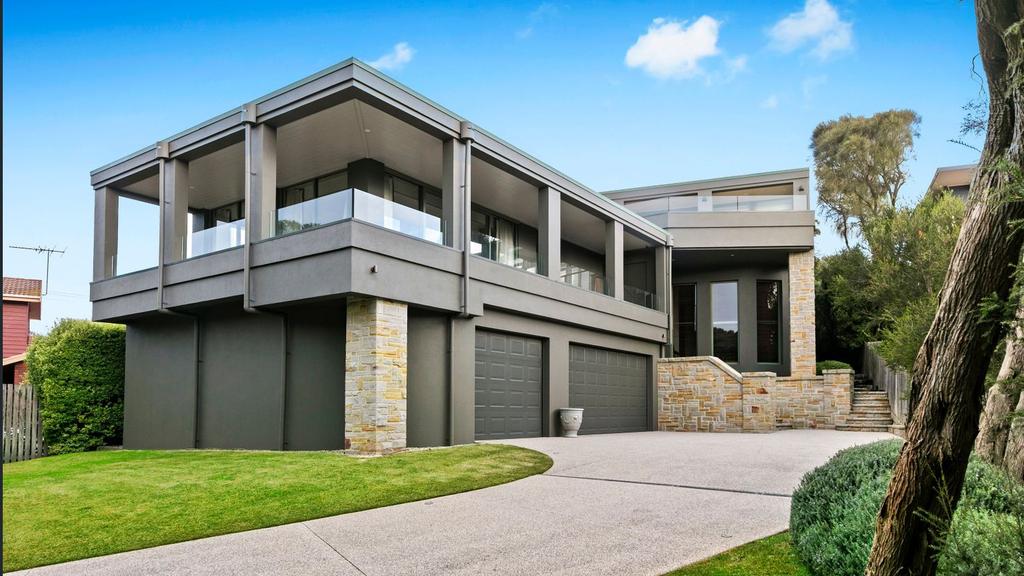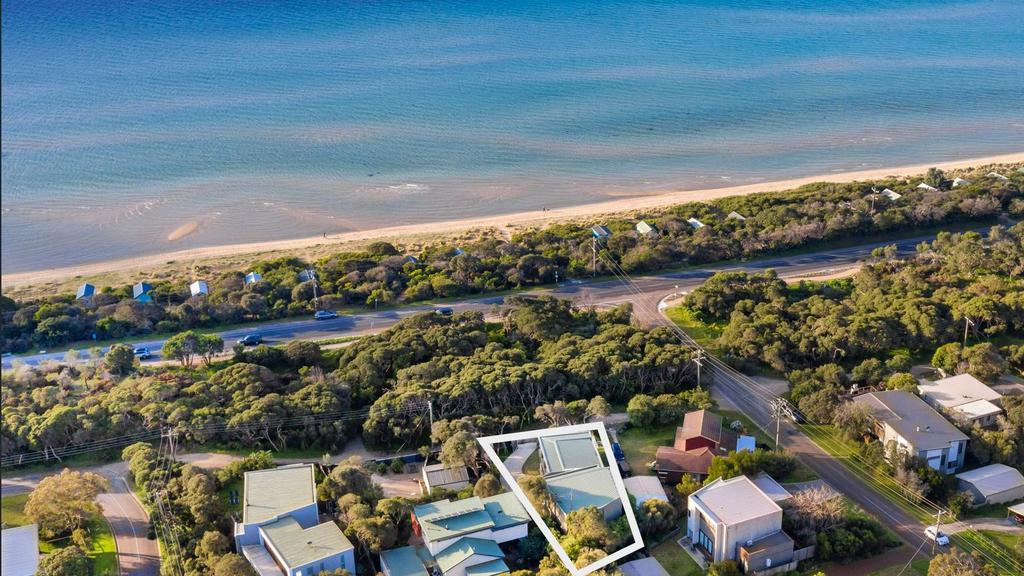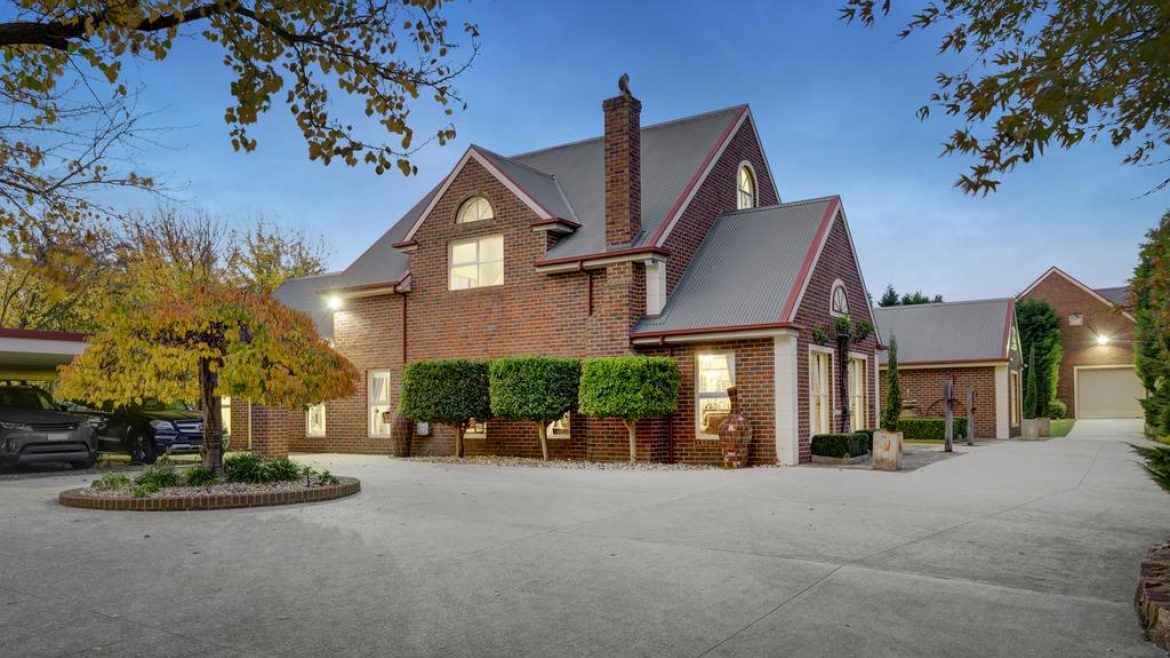
295 Kangaroo Ground-St Andrews Road, Panton Hill is on the market with a $3-$3.3m price guide and has notched healthy gains since it last sold for $1.08m in 2003.
The old adage ‘safe as houses’ has long been drummed into the heads of buyers. But is it possible to safeguard the value of your property?
The experts say yes, noting there are a few key inclusions that will help your home notch healthy gains over the years.
But they all agree: to futureproof the value of your property, a long-term plan must be in place.
RELATED: Stamp duty: Blue-chip suburbs set to save the most if tax is dumped
Why it’s the ideal time to add value to your home during the coronavirus pandemic
Does a pool or tennis court add value to your home?

2611 Point Nepean Road, Rye has gained millions of dollars in value in the past 20 years.
“It’s really important to play a long-term game as it’s so expensive to transact real estate,” Wakelin Property Advisory director Jarrod McCabe said.
The high cost of buying a home due to stamp duty — which can cost upwards of $45,000 for a house worth $845,000 — had led to more people renovating and extending their existing property rather than upgrading, he said.
Mr McCabe noted the government was considering dumping stamp duty in favour of a cheaper annual tax to be paid by homeowners, which would form part of Victoria’s post-coronavirus economic rebuild. But he said while the hefty fee was still in place, it was vital to ensure the house you were looking to buy would see you through a few stages of life.
“Don’t just look at what is important right now, but what you will need in the next five to 10 years,” he said. “You want scope to grow in the property and alter it as you need.”

Wakelin Property Advisory director Jarrod McCabe said a long-term mindset when buying property is important as it’s so expensive to transact real estate.
Advantage Property Consulting director Frank Valentic said to walk away with a tidy profit, having a 10-year plan at a minimum was key.
“Focus on not what it is worth today, but what it will be worth in the future,” he said. “Property goes up and down over a short period of time … but median house prices have nearly doubled (in the past 10 years).”

Advantage Property Consulting director and buyer’s advocate Frank Valentic.
LOCATION, LOCATION, LOCATION
This golden rule was the best way to ensure your home not only held its value, but also put more money back in your pocket come sale time, Mr Valentic said.
“You can change a property but you can’t change its location,” he said.
“We always put our properties through walkscore.com, as it’s a really good way of working out how well the property sits to transport and amenities. If it has a poor walk score, we generally don’t look at it.”
Mr Valentic said existing infrastructure like parks and water instantly improved an area.
“Water is a very important piece of infrastructure – proximity to a river, lake or beach is going to add a lot of value to your home,” he said.
And plans for new infrastructure — in particular train stations, supermarkets, childcare centres and schools — would help boost the value of surrounding properties.
“I had a client with a house that (gained) nothing for six years,” he said. “Then a train station got developed nearby and the property value went up $100,000 overnight.”

Realestate.com.au chief economist Nerida Conisbee said there was high demand for homes near good schools, shops and public transport.
Realestate.com.au chief economist Nerida Conisbee echoed the sentiment and said there was high demand for property listings close to good schools, public transport and retailing.
“Over the long term, the areas that tend to see the strongest price growth have been those that have undergone significant urban renewal as a result of older people moving out and young people moving in,” she added.
“Recently, these have tended to be inner-suburban areas with period homes. The housing quality was good but once young people move in, they renovate and create additional demand for good retailing and schools.”
Ms Conisbee said suburbs that lacked demand and had stagnant price growth were those with prisons, major road developments and ones that had been over developed.
Mr McCabe warned against purchasing in neighbourhoods near the scrapped East West Link, in case plans were reignited. The same went for suburbs that could be impacted by the North East Link.
Level crossing removals could also have negative impacts on property values due to noise and sky rails.
“There’s a great benefit of removing level crossings, but be aware if you’re close to that sort of infrastructure,” Mr McCabe said.

Proximity to water is one way your home will hold value.
VALUE-ENHANCING INCLUSIONS AND ADDITIONS
When purchasing a property, there are a few boxes to tick to ensure it holds value.
Mr Valentic said a north-facing living room and backyard, plus good land content were key. “Property is all about long term, so it’s important to remember land appreciates and buildings depreciate,” he said.
When searching for a house, or considering a renovation or extension, Mr Valentic said to focus on “adding another icon to the ad”.
“For better resale value, increase the amount of bedrooms, bathrooms or car spots — it can add hundreds of thousands of dollars,” he said.
Realestate.com.au search data shows homes with four bedrooms, two bathrooms and a two-car garage on a large block were most popular.
Mr Valentic said the question of how much value a pool could add was a “controversial one”. Pools were a sound investment in warmer climates, but less so in Victoria, he said. But they could still be a great addition to a Melbourne home.
“It’s important you get to enjoy it,” he said. “Never put a pool in right at the end when you’re selling. Put a pool in at the start and enjoy it for 10 to 15 years to get value out of it.”
MORE: Why a Box Hill vendor turned down offer $200k above reserve
Mornington Peninsula private beach for sale with dream home
Caulfield South Art Deco pad has business up front, party out back
The post How to future-proof the value of your home appeared first on realestate.com.au.

